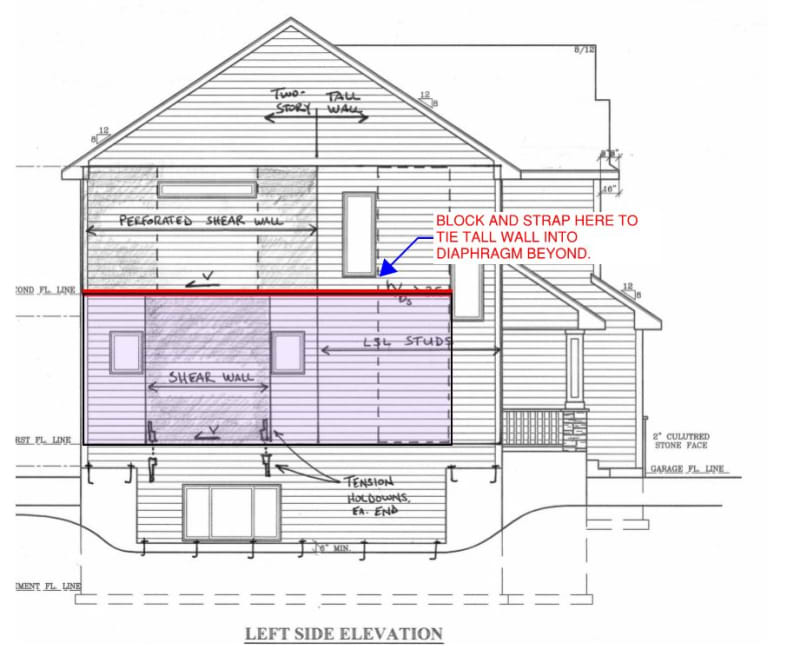I assist a few local custom home designers/drafters here in the Minnesota. Tall walls in entry rooms and great rooms, as you are probably aware, cannot be considered for resisting lateral loads using the braced wall prescriptive method in the IRC. That's when they call me for an engineered solution. Attached is an exterior elevation markup of a recent project. I evaluated the two story exterior walls as engineered shear walls, sheathed with 7/16" OSB. (The main floor shear wall may require a tighter edge fastener spacing). The half-height (cantilever) wall at the lower level can easily transfer the shear forces into the foundation via the ebmedded anchor rods. The h/b ratio of the tall wall segment between the windows exceeds 3.5, so I am neglecting it per AWC SPDWS 4.3.4. (I design the LSL studs and related connections for out-of-plane C&C wind loads). My question is in regards to resisting tension/uplift. This approach requires tension holdowns, due to the relatively short shear wall length considered at the main floor. It seems overly conservative to omit the tall wall portion as providing any shear or uplift resistance. The 4'x8' OSB panel edges are staggered so it should certainly engage some of the tall wall area.
I have some experience using the Force Transfer Around Openings (FTAO) method for shear wall design. It's h/b wall segment ratios are more accommodating for this situation. I think using FTAO method, I could distribute out the shear force proportionally around several windows and show that holdowns are not needed, because I would be able to consider more wall length. Perhaps I will transition to using this method in the future for these projects.
Can anyone with similar experience weigh-in or point out something I may have overlooked? Any input is appreciated.
I have some experience using the Force Transfer Around Openings (FTAO) method for shear wall design. It's h/b wall segment ratios are more accommodating for this situation. I think using FTAO method, I could distribute out the shear force proportionally around several windows and show that holdowns are not needed, because I would be able to consider more wall length. Perhaps I will transition to using this method in the future for these projects.
Can anyone with similar experience weigh-in or point out something I may have overlooked? Any input is appreciated.

